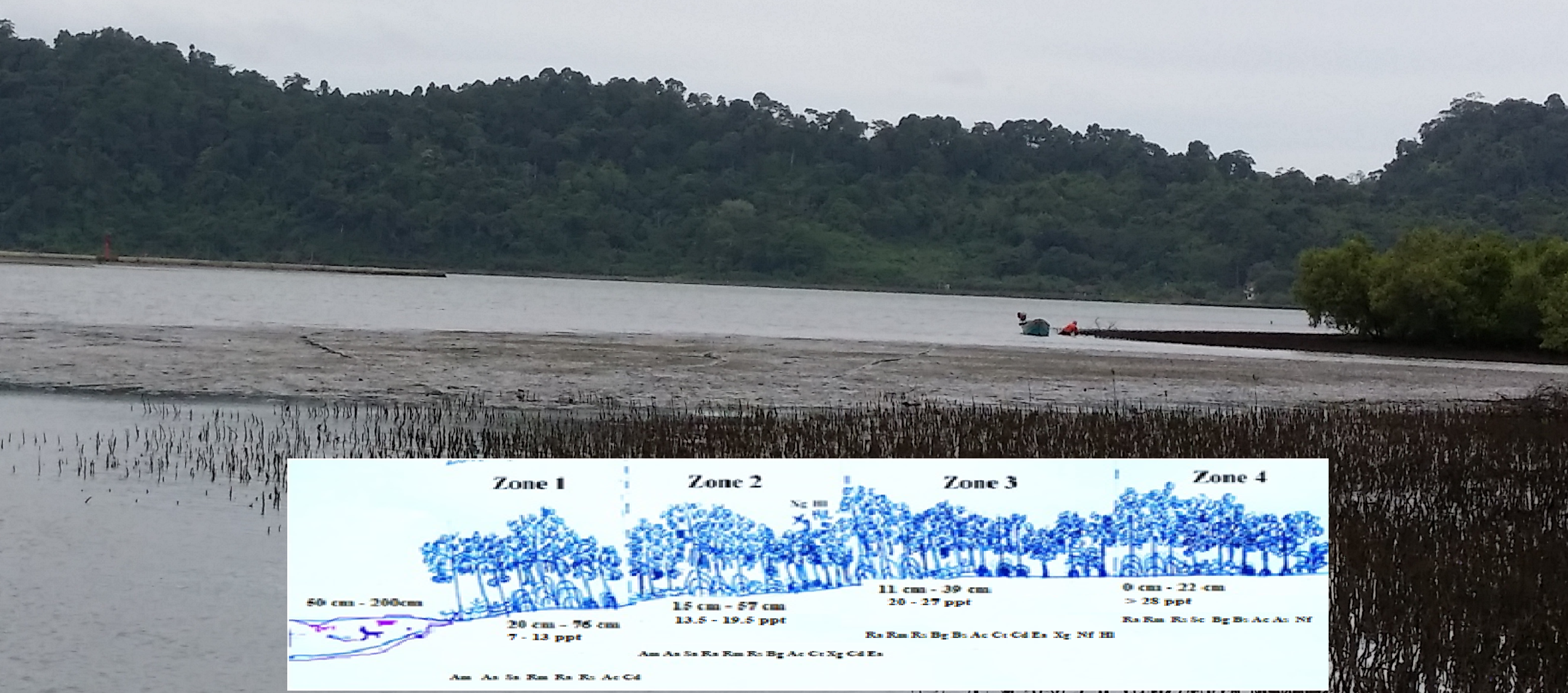Abstract
Mangrove ecosystem existence is important for environment and other organisms because of its ecological and economical values, so that management and preservation of mangrove ecosystem are needed. The purpose of this research was to determine the existing condition of mangrove, both its distribution and its functional transformation in Indah Kapuk Coastal Area. Avicennia marina becomes important as wave attenuation, a form of abrasion antidote. Transect-Square and Spot-Check methods were used to determine the existing condition of A.marina mangrove forests. Autocad program, coordinate converter, Google Earth, Google Map, and Arc View were applied in process of making mangrove distribution map. In western of research location exactly at Station 1 and Station 2, the density value of mangrove was 450 and 825 tree ha-1, respectively with sparse category because they were contaminated by waste and litter. In eastern of research location namely Station 3, Station 4, and Station 5 the mangroves grow well with density value of 650 (sparse), 1,500 (very dense), and 1,200 tree ha-1 (fair), respectively, eventhough the contamination still happened. The mangrove forests around the stations do not function as wave attenuation because there were many waterfront constructions which have replaced the function of mangrove forests to damp the wave. In short, it can be stated that the mangrove's function has changed in a case of wave attenuation. The function of mangrove forests is not determined by mangrove forest density but it is determined by mangrove's free position.
Authors
HerisonA., YuliandaF., KusmanaC., NurjayaI. W., & AdriantoL. (2014). The Existing Condition of Mangrove Region of Avicenia marina, Its: Distribution and Functional Transformation. Jurnal Manajemen Hutan Tropika, 20(1), 26-36. Retrieved from https://journal.ipb.ac.id/index.php/jmht/article/view/7926
Jurnal Manajemen Hutan Tropika is an open access journal which means that all contents is freely available without charge to the user or his/her institution. Users are allowed to read, download, copy, distribute, print, search, or link to the full texts of the articles in this journal without asking prior permission from the publisher or the author. This is in accordance with the Budapest Open Access Initiative (BOAI) definition of open access.




